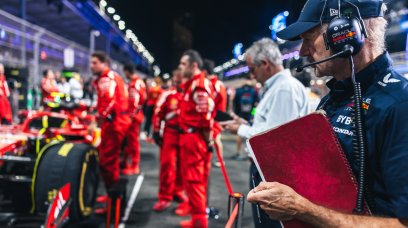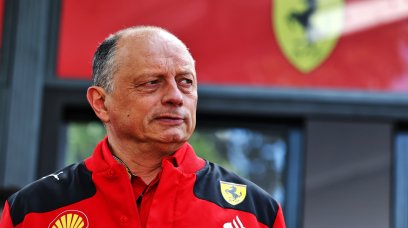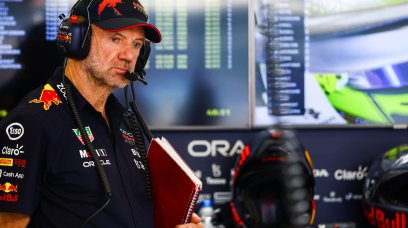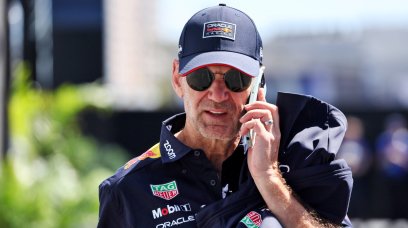F1 is bracing itself for another rain-hit weekend in Russia. Downpours have already arrived and are set to drench the Sochi region throughout Saturday, with fears in the paddock that the final practice and qualifying sessions will be delayed. It comes just a few weeks after the Belgian Grand Prix was delayed multiple times and limited to an exploratory sequence of laps behind the Safety Car, leading to frustration among on-site spectators who spent hours waiting around in awful conditions, and fans back home who sat patiently on their sofas, all to see no racing. But what are the chances of similar events unfolding at the Sochi Autodrom? And does this raise a bigger question over F1's ability – or inability – to put on a show in the rain? RacingNews365.com investigates.
Avoiding a repeat of Spa
"Visibility" was the buzzword in Belgium, as drivers complained of not being able to see even a couple of metres ahead while lapping Spa-Francorchamps in wet conditions behind the Safety Car, in the hope that the race would get underway. Amid heavy, persistent rain, the race was initially delayed by half an hour before two attempts were made to start it, with a gap of nearly three hours between them. Eventually, after a couple of laps behind the Safety Car, the race was called off, with a classification declared at one lap and half points awarded. F1 faces another weather-related challenge in Sochi on Saturday, though there are concerns that the situation could be even worse, not just in terms of the amount of rain expected, but also the nature of the track layout – which is much flatter than Spa, meaning water simply sits on the tarmac. It begs the question: what can realistically be done to avoid a repeat in the future? According to a team engineer, and some of the sport's most experienced drivers, there are two key issues at play: the current generation of cars, and the tyres.
What role do the cars play?
While F1 cars are faster than ever, they're also bigger and heavier than previous generations. For 2022, this is set to increase further with an all-new set of technical regulations . In conversation with RacingNews365.com , the aforementioned engineer made clear that the spray thrown up by cars was the main reason behind racing not being possible at Spa. Drivers were, in effect, driving 'blind'. According to the engineer, some 60% of spray comes from underbody 'suction', which gets widely dispersed by the rear diffuser, while 40% comes from the tyres. Next year, the diffuser is set to be even bigger as part of the new technical package. The engineer added that current cars generate 25% of their downforce from the front and rear wings, while underbodies account for approximately 50%. Next year, F1 hopes to reduce the 'dirty air' generated from the front and rear wings, meaning an increased reliance on underbody ground effects for downforce. As such, the floor figure could climb to 60% or above, creating more spray and reducing visibility even further.
What about the tyres?
Pirelli has acted as Formula 1's sole tyre supplier since returning to the sport in 2011, meaning the manufacturer sets its own benchmark season after season. It has a deal running through 2024, so the situation will not be changing any time soon. This compares to F1's 'tyre war' era, which ended with the 2006 season. Michelin and Bridgestone, and Goodyear before that, were forced to improve their wet tyre ranges or risk getting left behind by the competition. The engineer explained that the Intermediate tyre is currently the default option in wet conditions, as opposed to the dedicated Full Wet. Indeed, drivers have repeatedly complained about the Full Wet tyre not being up to the job in recent seasons. The engineer added that Bridgestone's 2009 'Monsoon' tyre was the best they had ever worked with in F1, referencing experience with various wet-weather tread patterns: "It was developed during the 'tyre war' with Michelin." According to the engineer, with improved water 'dispersement' from the tyres, aquaplaning would have been sufficiently reduced to allow for racing at Spa.
Pirelli's tricky position
There is no getting away from the fact that, as cars have becoming bigger and wider, so have the tyres – with 2017 marking the latest jump in this direction, from 245mm to 305mm at the front and 325mm to 405mm at the rear. "We are probably making the issue worse," Pirelli F1 boss Mario Isola admitted to the media, including RacingNews365.com , when discussing the sport's direction and how the company attempts to adapt to each change. "The fact that in 2017 we introduced wider tyres is also increasing this water that is flying. The old [Full] Wet was able to disperse 60 litres per second at 300 kph, now we are going up to 85 litres. "Unless we find a way to block the water, and avoid this spray and limiting visibility, I really don't know what we can do. I don't have a solution for that." Isola did suggest, however, that the micro and macro roughness of track surfaces could be further assessed. "It is probably possible to design a tarmac that is able to avoid standing water, or design circuits with a sort of camber that is keeping the water away from track, [but it's] not easy," he went on to comment. "Obviously we cannot ask the promoter to redesign, or reprofile, all the circuits, but there is something that can be done with the experience that we have in recent races."
Drivers give their insight
RacingNews365.com recently gathered the opinions of some veterans of the sport to get their take on the subject of wet-weather racing in F1. One of those drivers was Fernando Alonso, who made his Grand Prix debut back in 2001 and has experienced all sorts of weather conditions over the years. F1's visit to Fuji Speedway in 2007 is a standout example of the worst of these conditions, with a race still going ahead despite torrential rain. Comparisons have been made between this event and Spa, but Alonso quickly pointed to the two factors mentioned above – the cars and the tyres. Cars and tyres were much narrower 14 years ago, while drivers were also running Bridgestone's latest wet-weather rubber, only one season on from rival manufacturer Michelin departing the sport and marking the end of the latest 'tyre war' phase. "I think the [current] cars are different compared to then," Alonso reflected in an exclusive interview with RacingNews365.com . "We had traction control, so that was a safety thing on the car. We had different tyres that performed better in wet conditions than what we have now, especially in extreme conditions." Sebastian Vettel, who was also part of the field in Fuji in 2007, infamously crashing his Toro Rosso into Mark Webber's Red Bull during his first full season in F1, echoed Alonso's sentiments about the cars and tyres. "I think there's significantly more ground effect with the cars that we have now, or more downforce. We seem to suck water off the ground," he told media, including RacingNews365.com . "I think the [Full] Wet tyres that we had, what I remember in those days, made it easier for us to race in very, very wet conditions with a lot of water on the track." "I think those are probably the key differences."
Is there a solution?
Short of changes to the technical regulations, Alonso reckons F1's best bet is to be "more flexible" with its approach to rain-hit weekends. Several ideas have been mooted, including the freedom to move a race (or in Sochi's case qualifying) to a different part of the day if forecasts are predicting bad weather. It is an approach F1 has rarely taken, but is commonplace in other forms of motorsport. "We need to find a solution in terms of visibility. Maybe with some devices on the cars that stops the spray," Alonso continued. "If not, we need to have a Plan B as a sport. NASCAR has a Plan B. All the big races have a Plan B. "You can play with the starting time of the race if you have a window that it's gonna rain less at midday, you anticipate the race [by moving it] two hours. Everyone will be there. We need to be more flexible." It appears that Alonso's comments have been heard by officials, based on a radio exchange between Red Bull Sporting Director Jonathan Wheatley and F1 Race Director Michael Masi during Friday practice. Masi said the intention is to run qualifying on Saturday as planned, based on window at 15:00 local time, when Q1 is due to begin, but that the FIA had been "trying to look a bit ahead and have a just-in-case fallback" in the event of the anticipated poor weather. As F1 and the FIA continue to monitor the situation , drivers, teams and fans will be hoping a repeat of Spa is avoided – both in terms of the severity of the weather conditions, and the endless delays…
Most read



















